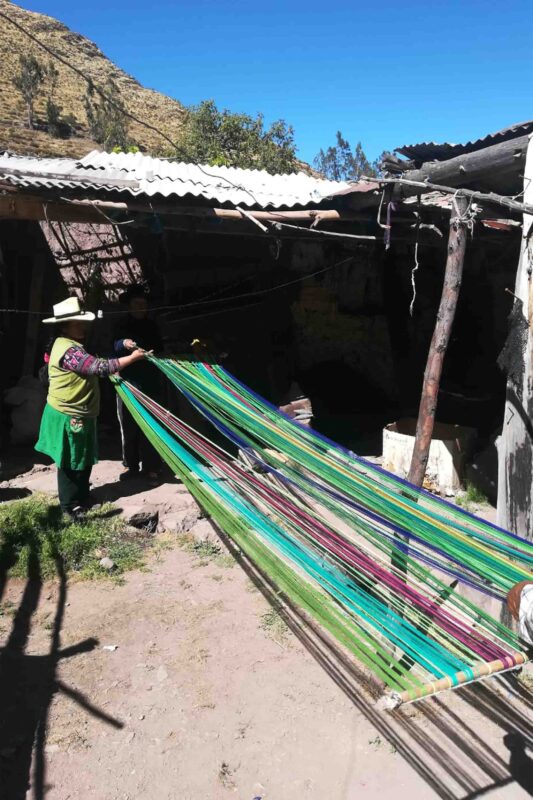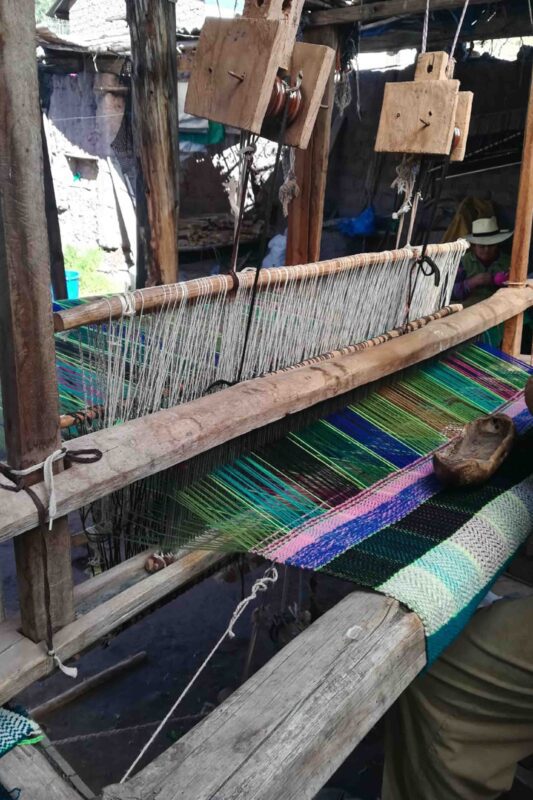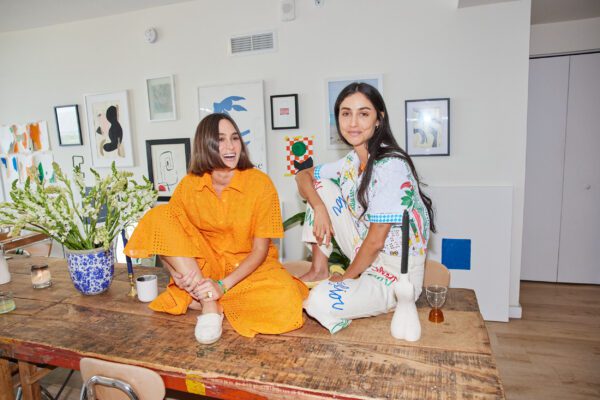
COFFEE WITH
MOZHDEH MATIN: “OUT OF NECESSITY, I CHOSE INNOVATION”
Name: Mozhdeh Matin
Profession: Fashion designer, founder Mozh Mozh
Place of birth: Cajamarca, Peru
Zodiac Sign: Taurus
Instagram: @mozhmozh_
LATINNESS: Before we get started, how do you take your coffee?
MOZDEH: Black, no milk, no sugar.
LATINNESS: What was your first step towards a career in fashion?
MOZDEH: I was about 19 or 20 years old when I entered a contest organized by Peru Moda, and it was thanks to this I presented my first show, while I was just starting my studies. I won the contest, and it allowed me the opportunity to do an internship in Paris and, later, travel within Peru, meet different artisan communities, and discover a very different world from the one I knew about through fashion school. I started to look into the work of the native Peruvian population, and my career began leaning towards textiles, community and artisan work, well, everything I do today.
The trips became more and more frequent, and through them I was able to learn about different techniques. Peru is a very rich country, so wherever you go, you always find something different, a specific type of clothing; everything has a meaning in this culturally rich territory with great textile abundance.
Of course, I’m constantly curious. When I find something new, I’ll always ask: “Oh, where is this from? Cute! I want to go!” Oftentimes, even at craft fairs, if I see something that catches my attention, I’ll talk to the craftsman and ask if I can come visit him. Usually the response is yes, and then I’ll plan the trip.

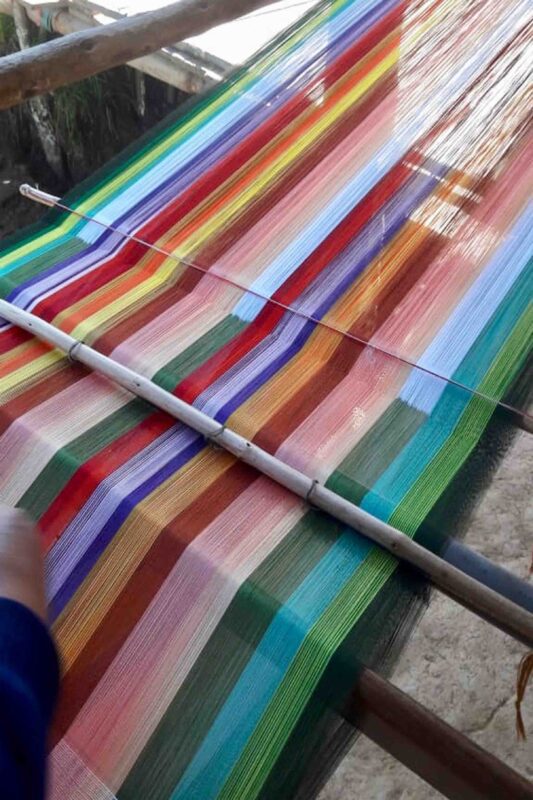
LATINNESS: Is there a particular region that has most influenced your work?
MOZDEH: Now that I think about it, I spent my twenties traveling a lot to different communities, but above all, to the Sierra, in the Andes. Since one tends to associate textiles with the mountains, I was focused on that region for a long time.
However, in the last five years I’ve begun to discover the Amazon, and have developed a great interest in this region, which was almost taboo, because it’s not a place that is talked about much or that is usually visited. I mean, it’s not easily accessible. It’s not a place you go by car, you must go by plane, and once you land, you have to travel about 6 or 7 hours by boat. It’s very intense, and it’s not a place where designers go to work.
Also, people in the Amazon are not like those in the Sierra, who are used to working at a certain pace when you ask them for something. They don’t have that habit, their mentality is different. Still, I find it an interesting challenge. I discovered many things and decided to bet on them
LATINNESS: Something that stands out about your work as a designer is your creative vision, which is very clear and coherent. Is this something you’ve developed over the years?
MOZDEH: That’s a very strong question, because one is a designer, but not necessarily a photographer. Doing the editorial or the imagery is another vision, and it’s an area where I always struggle. I’m always questioning, “Is this what I want?” Of course, I try to make it as natural, genuine and simple as possible, as horizontal as possible, let’s say. I try to look for that and I think I’m OK there. If I don’t feel like I want to aspire to something I admire and say something like “Oh, I want to do this” then it’s a dangerous place … it can get out of hand.
I try to be genuine, and to find a balance to get to the point where I want to say things. It also has to do with trusting the people I work with: the photographer, the art director, and the makeup artist. I look for talented people who can contribute to the brand. That’s very important to me, to give in a little and say “I love how he does her makeup; they can do it.” I explain the concept of the collection, and he proposes the type of makeup he envisions, and then goes for it. And so the same with everyone.
In general, the brand works that way: not only with the community, but also with the photographer, in a constant consultation or negotiation.
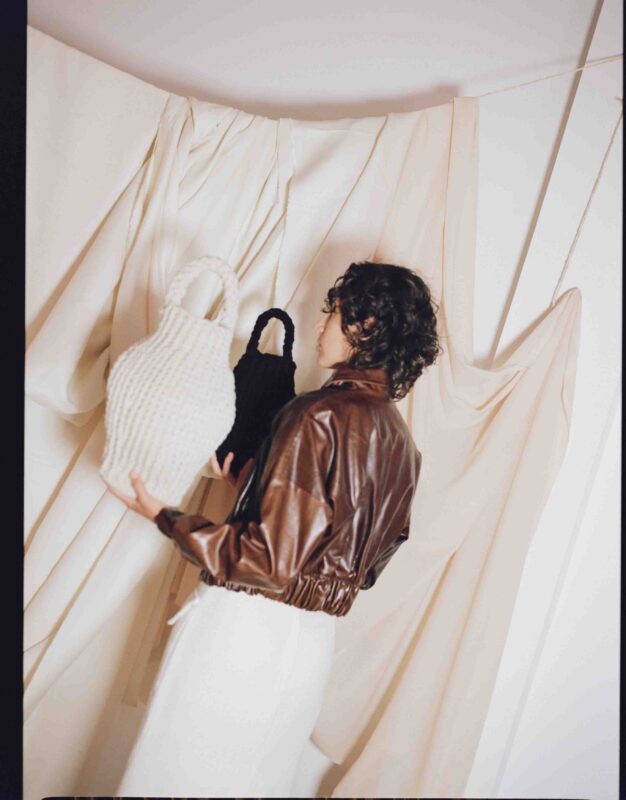
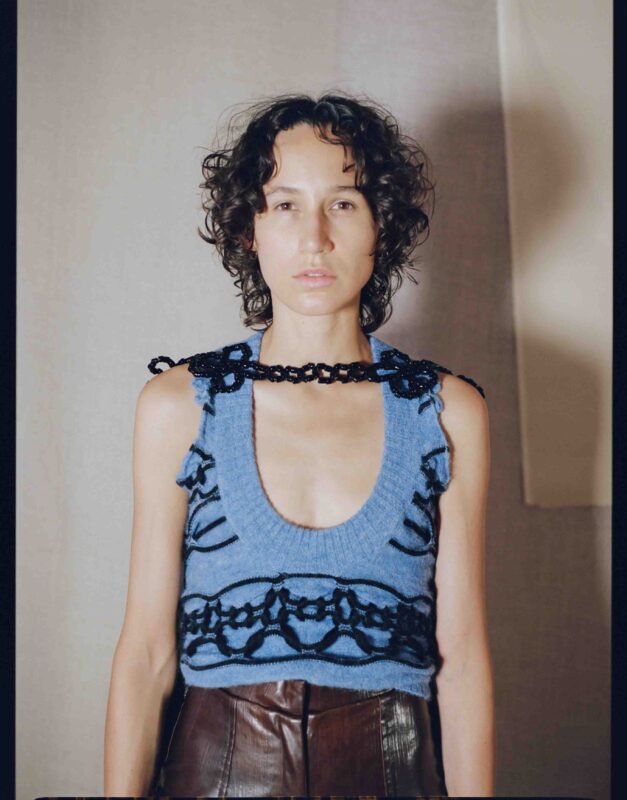
LATINNESS: A former boss once offered a piece of advice I will never forget: “A good leader is not one who knows how to do everything well, but one who knows how to choose the right team and surround himself with the right people.” You just reminded me of this.
MOZDEH: We all have talents and it’s nice to recognize, admire and say: “I want to work with you.” It’s actually happening now, although in a strange way: I decided to start producing my campaigns in New York with a team that I don’t even know physically, but I trust them. This is the second time I have worked with a group of stylists, photographers and super cool people who love the brand. They just sent me the videos, and I cried with emotion. That’s what it’s all about, trusting people that you know are super talented and that you like what they do, no matter who is there saying “it’s like this.”
LATINNESS: Aesthetics is a language, and sometimes if you speak the same language, aesthetically, then it’s easy.
MOZDEH: How beautiful what you just said. Absolutely.
LATINNESS: In everything we’ve read about Mozh Mozh, you identify yourself as a slow fashion brand. How would you define slow fashion?
MOZDEH: All these terms are new. I didn’t start out thinking I was going to conceive the brand this way. I wanted to do things my way, according to what I think, which is a more natural rhythm, unlike the slavery of the industry. I remember when I was studying fashion, we went to a factory that produced cotton t-shirts. They offered us the opportunity to work there and create designs for Armani and Dolce & Gabbana because they produced their polo shirts there. Just being in that place I thought: “This is the most horrible place I have ever walked into in my life.” I always knew that I wanted to do things differently.
And this way in which I have been working can be pigeonholed into many terms that today are part of a new wave, such as slow fashion, but we maintain a rhythm. We create two seasons a year, we still run with productions, we put energy into it and we make it happen.
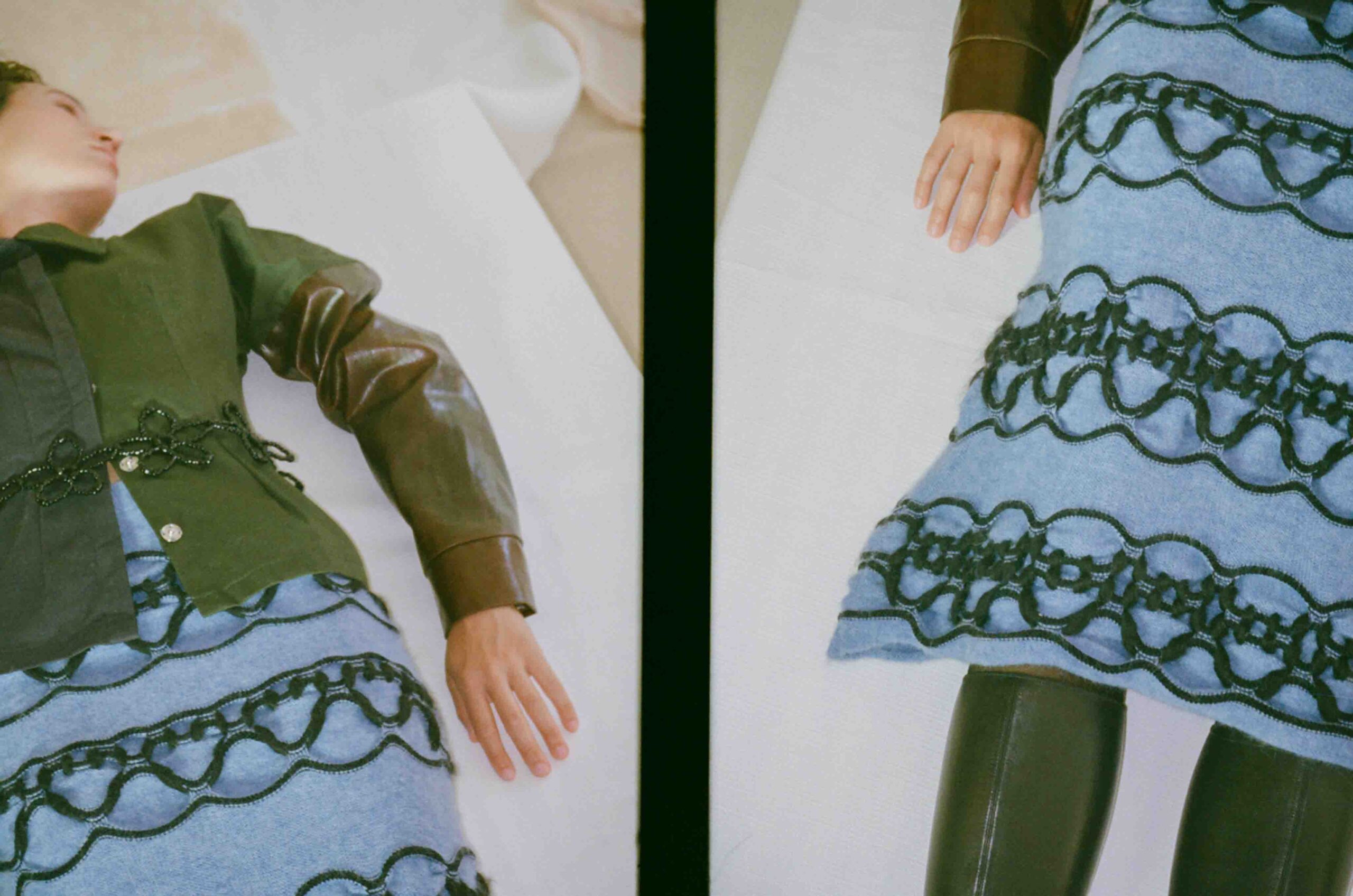
LATINNESS: Has the pandemic made you rethink your business? What things (if any) have changed during this season?
MOZDEH: The pandemic gave me affirmation. It has confirmed that what I am doing is very good, and that I must put a lot more energy into it. I had the opportunity to see and participate in Zooms and Instagram Lives and all to soak up a bit about what is happening in fashion in the world.
It was very interesting, because a lot of big brands were like “Oh no! We have to be sustainable. What have we been doing?” And everyone started reacting, and I was just thinking “Uh, ok. This is nothing new to me: check, check, check. Everything is fine, everything is going to be fine.” What you have to maintain is energy and the strength to carry on with this. I decided not to stop. I decided to produce what I had to produce, to do what I had to do.
For a moment I was afraid, I won’t deny it. I thought “What do I do?” And I got there. To get confused with “I don’t know what to do”, but I put it on standby, put it aside, and instead said “Let’s wait to see how things happen, and as soon as I see a light, I’m going to run.” And that’s what I did, that’s what I’m doing. I was able to achieve all the goals I set for myself in terms of production and release a new collection.
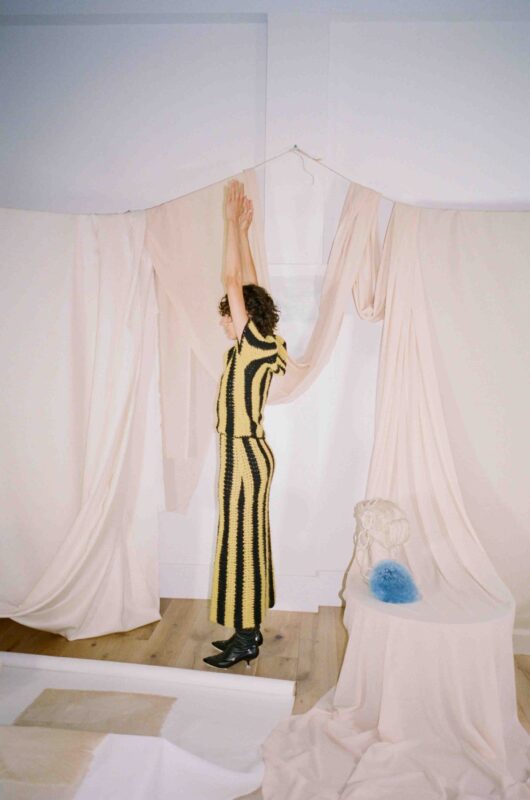
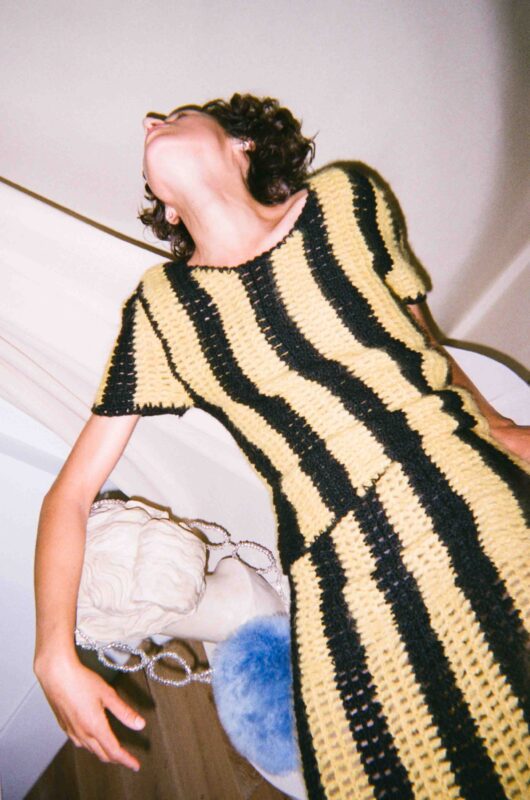
LATINNESS: You’ve received quite a lot of international recognition. What is it about Mozh Mozh that attracts editors and customers, in your opinion?
MOZDEH: I don’t know, I think it could be different things. On the one hand, it’s always refreshing to see something different, something new. I am aware that fashion is just that, how suddenly it’s this and then suddenly it’s the other. Right now we are in a moment where people are like “Oh, this is happening! This brand works in an artisanal manner, but is contemporary and comes from Latin America … ”
There’s a balance there that, in a way, works, because I feel like Latin American designers are getting more attention, for the first time. In fact, this is what Sara Maino (Vogue Italia) told me. That they had never been interested in Latin America, until now, and that they were beginning to see this part of the world as fashion, because something is being done that comes from here and it has a language from here, which includes work with the communities. And we are doing it in a very genuine way, so there is more attention.
In my case, I work with a PR, which is helping the brand a lot. It was one of my most significant investments, but I said “If I want this to work and I am in Lima, Peru, in South America, which is so far away, and there is no fashion industry… If I want my brand to really work, I need to collaborate hand in hand with people who are going to make this fly. ” I teamed up with Modeworld and they have been super good. They are moving the brand with stylists and publishers.
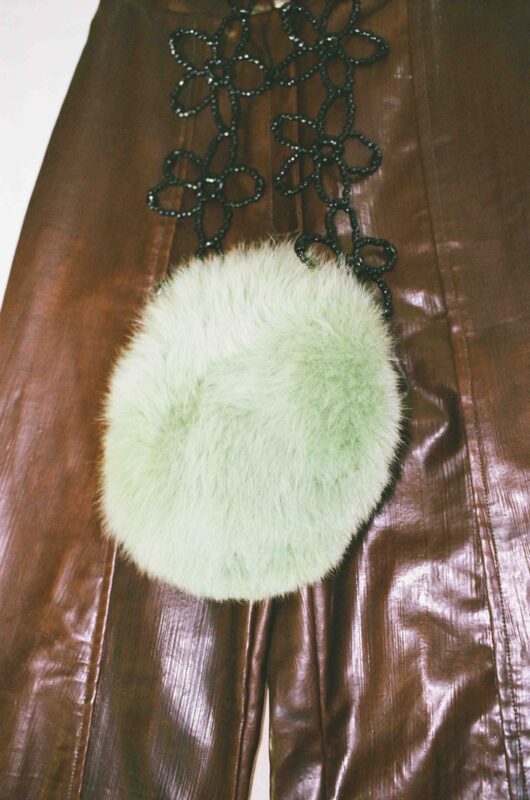
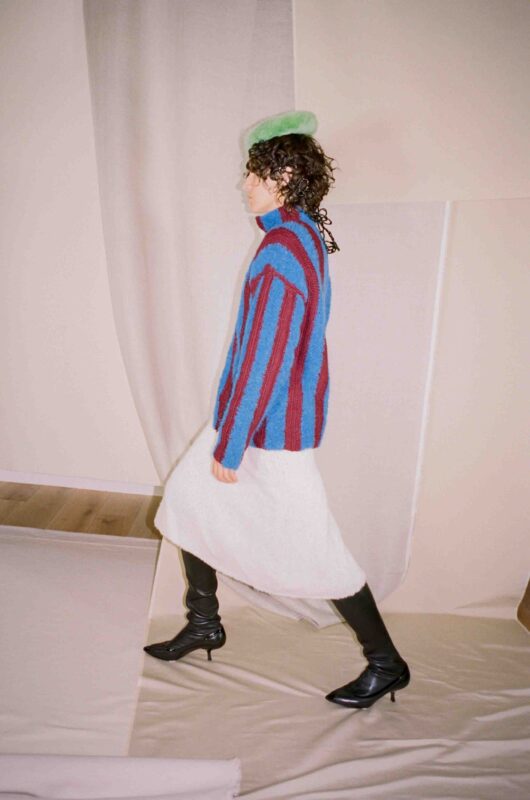
LATINNESS: How has the Peruvian market responded to the brand?
MOZDEH: People like it, and we have more and more fans of the brand, but Lima doesn’t have a strong fashion industry, that is, people don’t consume as much. They consume, but on a more specific level, so it is very small. The truth is, I still haven’t put so much energy into Lima. This year it coincided with the fact that they offered me a space to do whatever I wanted in a neighborhood called Barranco. I think it’s going to be important. It’s a designer store, and I think it’s nice to have a place in Lima too, since the brand is based here. For the public particularly, because my studio is not open to the public. I’ve just started working on this project actually.
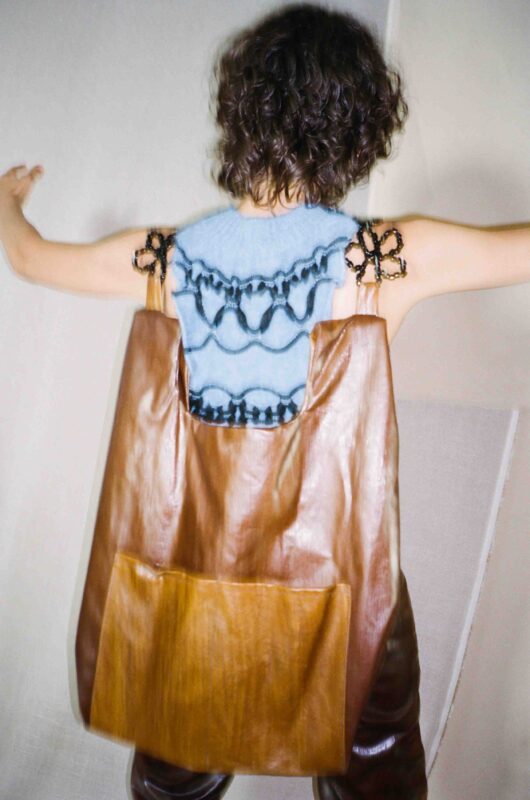
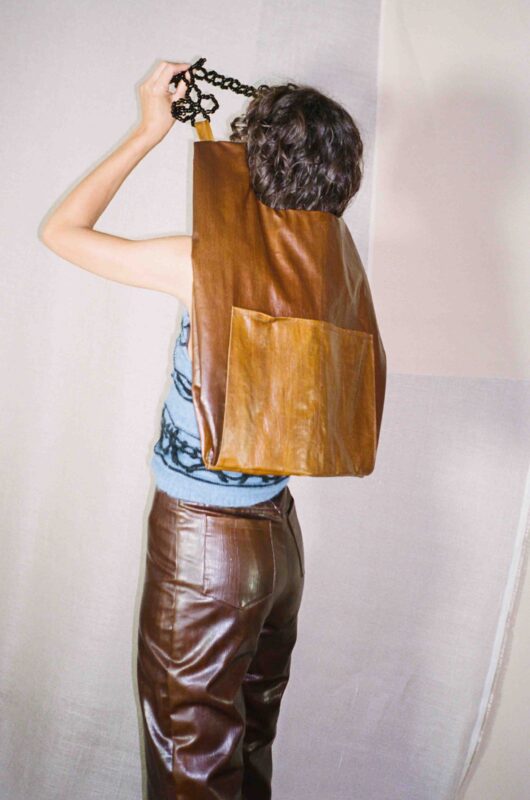
LATINNESS: Can you tell us about your work with Shiringa and MM Natural Rubber?
MOZDEH: So what I mentioned earlier about the Amazon, it’s one of the projects I started with there and I’m super excited about it. It’s still a baby, because what we are doing is very artisanal, in the most precarious way possible. However, it’s a material that has a lot of potential, which I want to continue researching, working on and promoting.
In fact, we are now in the phase of creating a product that will serve as a conditioner for the material, because it’s a kind of leather. You put a wax on the leather to make it shine and look nice. We are developing this one based on natural products, such as beeswax, oil and fruits from the forest, and it will come in a can with each garment. It is applied on the piece since the material is natural and dries. It’s a bit complicated to explain, but it needs a conditioner and something to make it shine so that it’s not dull.
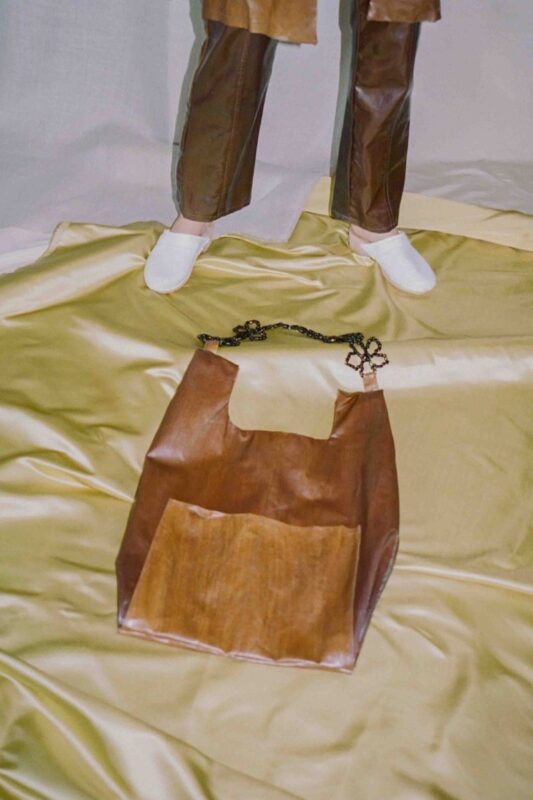
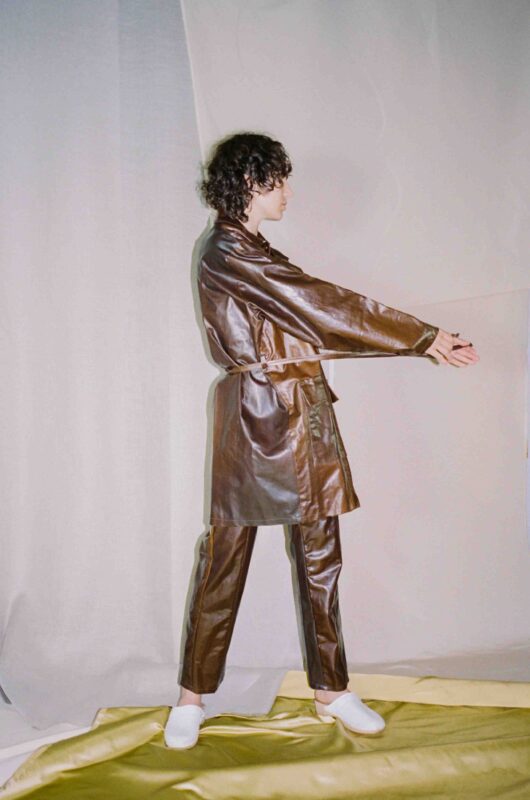
LATINNESS: It’s admirable to see what you’ve achieved as a small brand in terms of innovation and materials.
MOZDEH: The reason I started doing this was the textile tradition of Peru, a country of cotton, alpaca and knitting. I specialized in the latter for many years. However, there comes a time as a brand when you say, “I need more materials; I need to create a little tension.”
Personally, I have always liked leather; I’ve used my mom’s vintage clothes in this material, but of course, I’m not pro leather, and I wanted something that looked the same. Years ago a friend brought me a piece of hard rubber that looked almost like the sole of a shoe, and told me that I should do something with it.
I had it for a long time until it occurred to me to go to the jungle and find the community that developed it. I took different materials and we bathed them in rubber until this product came out, more flexible and usable. This is my alternative to leather.
In need of a new material, I chose innovation. I never planned it, I never said “I’m going to invent a material,” but the need to want to use only local products led me to inquire about what was around that I could use and would serve me, and that I liked. This is how I got to rubber.
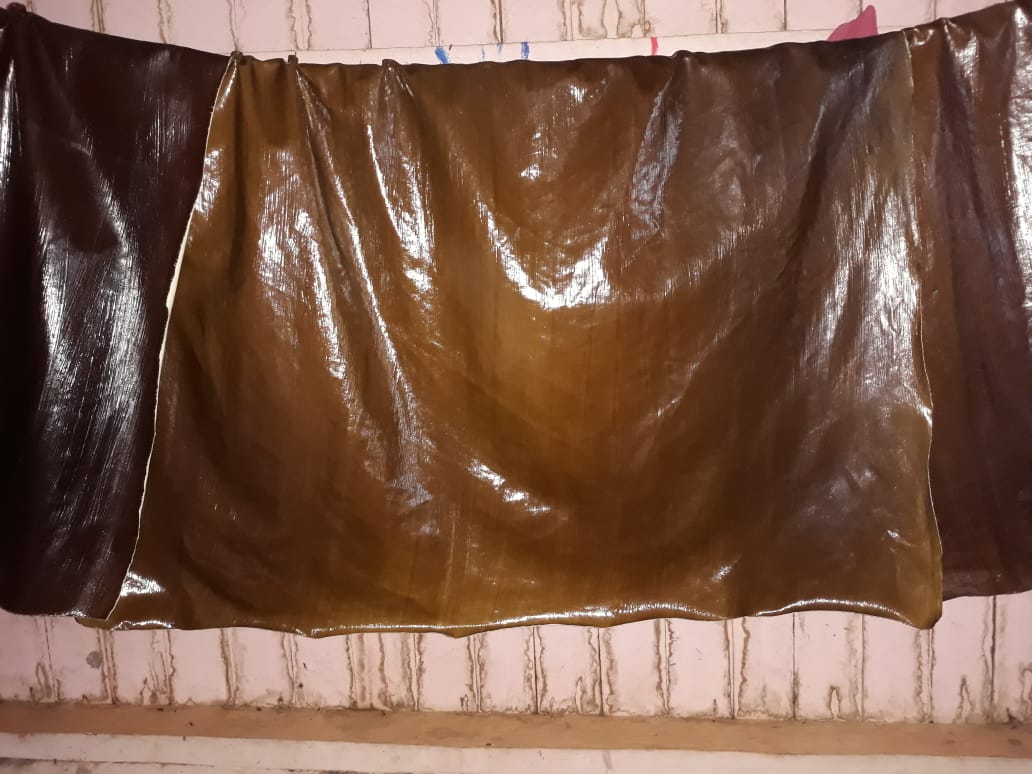
LATINNESS: It’s like the saying in English goes: Necessity is the mother of invention. Have you sold products with this material yet?
MOZDEH: Now we are in full production, because I present it in the fall, and I do it at that time for two reasons: because it is warm, but not heavy, so it’s good for fall, and because the production stage coincides with the dry season in the Amazon. I really want to do something for Spring, even if it’s small. At that time I start the production stage, right in the rainy season, and you can’t work then, so I have to be careful with that.
My best rubber buyers are stores in Japan, perhaps because of the price, because it’s high. I also take personal orders, because I know that people want to buy the brand, so I have a lot of rubber. It’s a material that people find interesting.
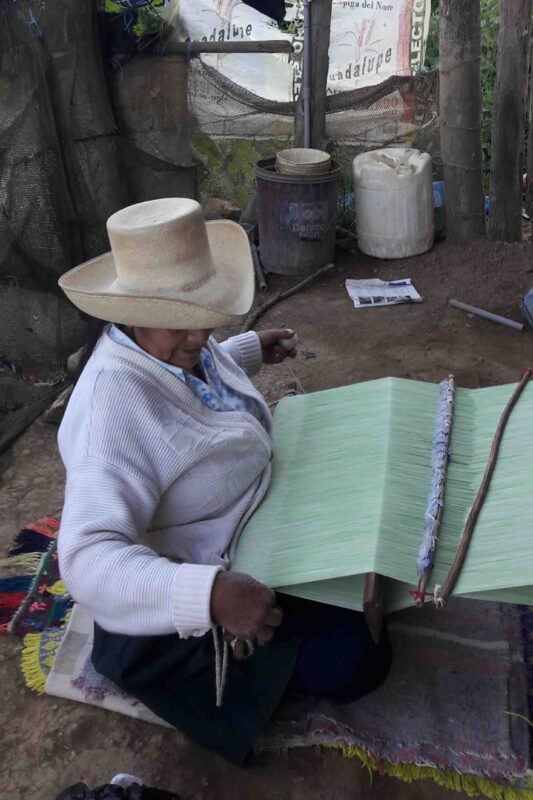
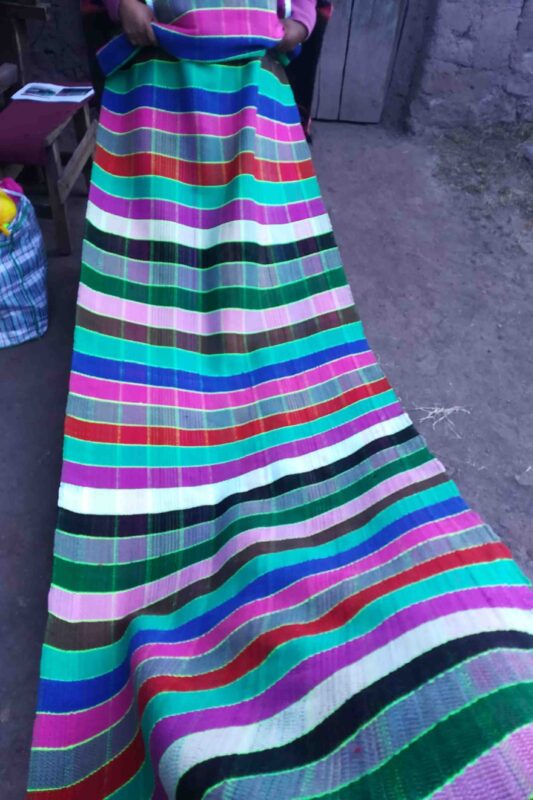
LATINNESS: When we talk about sustainability, the first challenge is design: creating pieces people will want to keep in their closet and not throw away. How do you face this challenge?
MOZDEH: I think the foundation of everything I work with, from raw material to technique, is something really durable. It’s good material. Normally it’s a textile you would put in your house, for example, on a piece of furniture. Those are the textiles with which I make the garments, and they have great durability. The other thing is our finishes. A detail takes a long time to make, and I try to take the utmost care in that. Our quality control is quite strict. This way, this entire chain makes the product sustainable.
LATINNESS: Your collections tell a story about Peruvian culture. In your opinion, what role does design have in contemporary culture and the history of a country?
MOZDEH: In my case, it’s a role in Peruvian history, because I work with the contemporary culture of my country. In each community there is a type of fabric, a technique and, as in all of Latin America, this is something that is inherited from ancestral cultures. Precisely, one of the principles of the brand is to help preserve these cultures. I never wanted to be a firm that shouted “I am Peruvian” because I do not consider myself patriotic, but I do highlight the culture behind it.
It sounds very cliché, but actually believing in yourself. That is very important: pay attention. Your relationship with how you create a brand or your vision has a lot to do with your principles and qualities as a person, so I think that one should seek integrity and be as genuine as possible.
Many times you like something, especially when you are young, but you think “Why should I like that if I’m the only one who sees it?” That creates insecurities for you. Believing in what you are seeing is essential.

LATINNESS: Do you have a dream to fulfill?
MOZDEH: Make a brand that is part of the change, and I think it has happened on a certain level. I feel like a transformation is taking place in the world of fashion and I would like to be a part of that. I wish I could become an agent of change, a brand that new generations see and say “I want this.” I would like to be able to inspire other young people, and for the brand to grow and be real, genuine and sustainable. That it leaves Latin America and it is strong globally.
